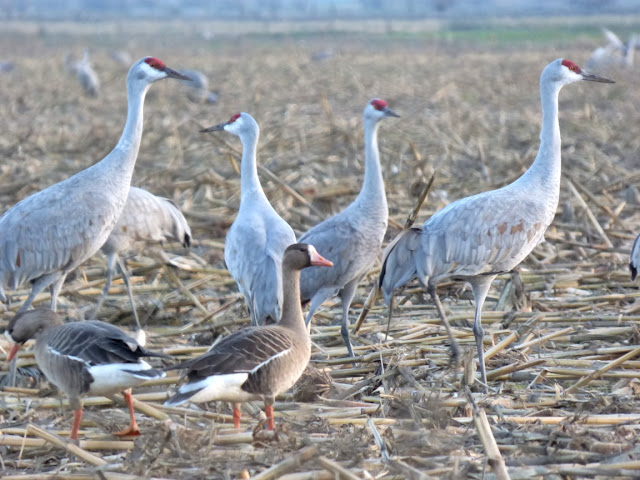Happy New Year! May you be blessed by the Bluebird of Happiness this year!
It's taken a long time to post my first birds of the new year. There has been a lot going on, and none of it in the form of birding. But that changed a little bit today.
If you aren't one of my local readers, MJC refers to the school where I
teach, Modesto Junior College in California's Great Valley. It's turned out to be a pretty nice place
to watch for birds. There are the many normal urban birds, the gulls,
crows, mockingbirds, and Scrub Jays. But there is also a drainage sump on the campus
dating from World War II that has grown into a small woodland that
approximates a pond ecosystem and wild bird habitat. I've identified more than forty species
so far on campus.
I was on campus today preparing for the new semester that begins on Monday. There were very few people out and about, and in their absence, the small birds were active all across the campus quad. The reason was obvious: some of the decorative trees still had lots of berries to eat. What are those pink berries, by the way? I'm not a botanist (and many would say not a birder either).
 |
| "I don't know either, but you can't have mine" |
I haven't seen Western Bluebirds (
Sialia mexicana) in months around here (they may have been around, I just miss them). There were at least a dozen of them on the quad today. I was delighted. Without all the students walking by, they didn't seem to mind the tall guy with the camera.
I think they spend the summer in the Sierra foothills and higher mountains, and move down into the valley for the winter.
The females are the more drab of the two sexes. They have a bit of a blue blush but are mostly gray on top. Both sexes have the buff and white in front.
It was so nice to see them again!



























